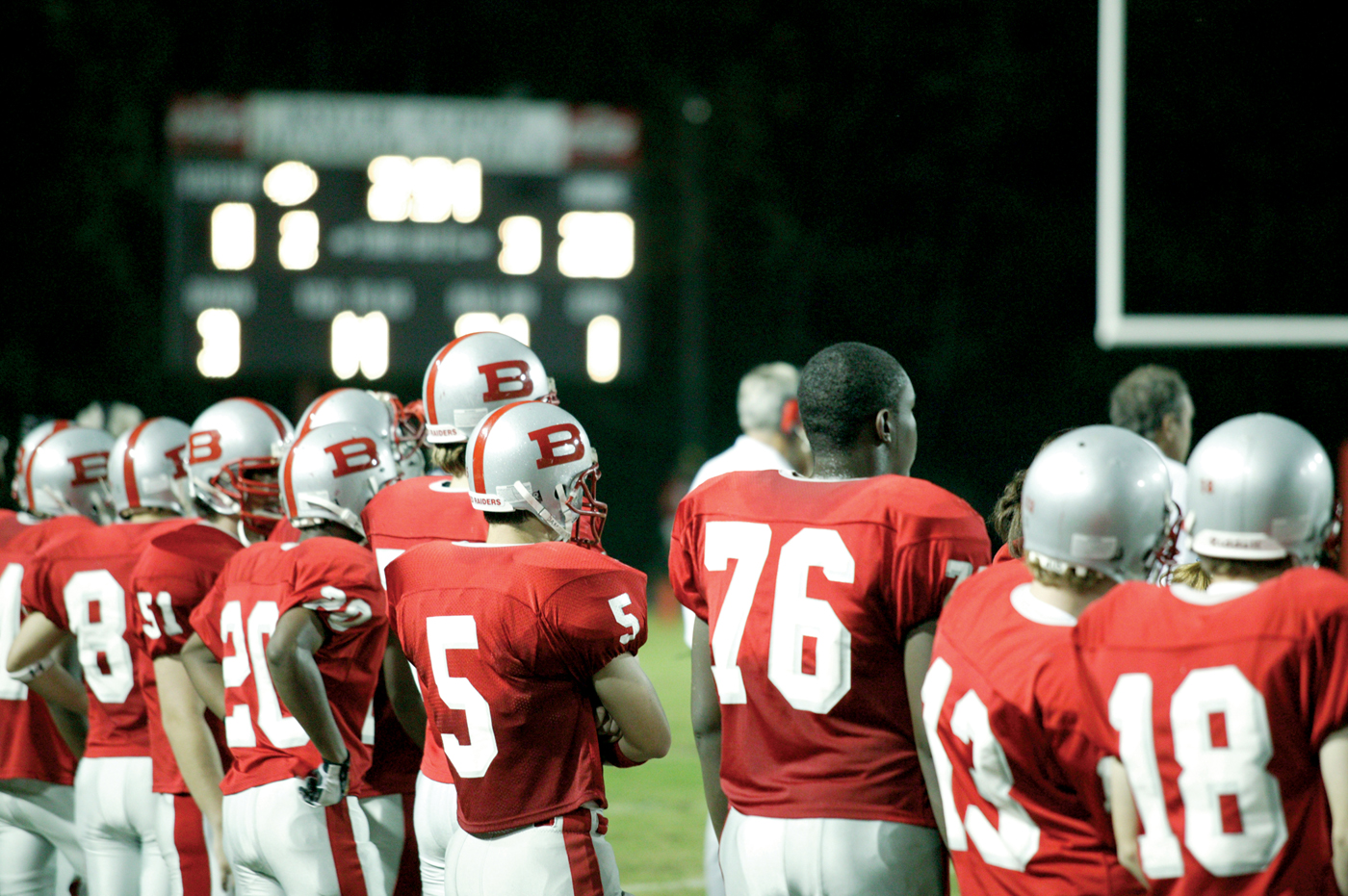A Great Heritage, the History of Baylor Football

by John Shearer
The story of Baylor football is among the richest histories of any high school team in the South. Through many decades and under various head coaches, Baylor has produced numerous outstanding teams. Baylor School's winning tradition was established early with such outstanding teams as the 5-1 squad of 1910, the 1911 squad that went 4-1 and won the East Tennessee championship, the 6-1 team of 1914, and the undefeated team of 1916, which won the city and Southern championships.
But the start of Baylor's great football heritage really began with the arrival of James B. Rike, a tough and demanding disciplinarian who knew how to get the most out of his players. Outstanding seasons under Coach Rike included those of 1920, 1932, 1937, and 1939. As good as the years under Coach Rike were, Baylor soon entered an even more successful era. And it was all due to one man Humphrey "Humpy" Heywood. In 1940, his first year as head coach, Baylor went 10-0. Before he retired after the 1960 season, Baylor would have seven more undefeated seasons. Coach Heywood represented everything that was right about Baylor football. An excellent teacher and motivator, he worked his players extremely hard but knew how to show respect and compassion. As a result, his players developed much respect and love for him. The Heywood era was also one during which post graduates participated. However, to say Baylor won because it loaded its teams with talented older players does not give proper credit to Coach Heywood, his assistants, or the numerous athletes who worked hard to contribute to Baylor's success. The years under Coach Heywood also marked the beginning of the hiatus in the Baylor-McCallie series. After the 1940 encounter, the two teams did not face each other again until 1971.
Coach Heywood's tenure was followed in 1961 by that of Coach Jim Worthington, who led Baylor to an undefeated and untied season in 1963. But as the mid- and late 1960s rolled around, Baylor hit something of a dry spell. Part of the problem was that Baylor was having to play schools that, unlike the Red Raiders, still played with post graduates. The disappointments of the late 1960s were quickly forgottten when E.B. "Red" Etter was named head coach in 1970. A master tactician who had led longtime rival Central High School to many successful seasons, sometimes at Baylor's expense, Coach Etter needed only one year to turn the Baylor fortunes around. In 1971, after losing their first game, the Red Raiders won nine straight for their best season in eight years. The 1971 season turned out to be the start of another great run in Baylor football. In 1972, the team made it all the way to the finals of the state playoffs before losing to powerful Tennessee High of Bristol. The next year would be Baylor's turn to reign. Led by running back Andy Rutledge and several linemen who were small in size but big in heart, Baylor won the state championship with a victory over Memphis Hillcrest High at the Liberty Bowl. A few weeks later, the team was voted as the best high school team in the nation by the National Sports News Service.
For most of the 1970s, Baylor was the best team in the Chattanooga area. The 1975 team was No. 1 in the state until getting upset in the first round of the playoffs, while the 1977 team made it to the state finals before losing a heartbreaker to Christian Brothers High School at the Liberty Bowl. The 1978 team was also undefeated during the regular season. Unfortunately, Baylor went through a dry spell in the 1980s. But in 1988, Coach Fred Hubbs was named to replace the departing Mike Stewart, and he quickly went to work reminding the players of the rich Baylor tradition and telling them that they must pay the price to achieve success. Slowly, Baylor began looking like the Red Raiders of old.
After an improved 6-4 season in 1990, the 1991 squad, led by running back Frahn D'Anjou, lost only one regular season game and advanced to the third round of the state playoffs. The 1992 and '93 squads also won region championships and advanced to the playoffs. The fiery and intense Ralph Potter, who taught his Red Raider players that they could play with any team, took over as head coach in 1994 and led Baylor to the third round of the playoffs in both 1995 and 1996. After Potter left to return to his alma mater, McCallie School, Coach Hubbs was named head coach for a second time. He led Baylor to two victories over McCallie and a narrow playoff loss to the much more talented Father Ryan in 1997, followed by a 2-7 season with a mostly young team in 1998.
After a winless, injury-plagued season in 1999, the Red Raiders enlisted the aid of new head coach David Bibee to help Baylor step up to the challenge of the larger Division II Large foes. The Raiders finished with a 7-4 record and a first-time appearance in the Division II state semifinals in Bibee’s first season, evidence of the same pride and determination that has always made Baylor football so special. Bibee left Baylor after the end of the 2005 season with a 33-29 career record.
Coach Phil Massey took the Baylor helm in 2006 and coached the Raiders to a 9-3 record and a state semifinal game in his first year. Massey's teams were state runner-up in 2010 and 2011 and returned to the semifinal round in 2014.